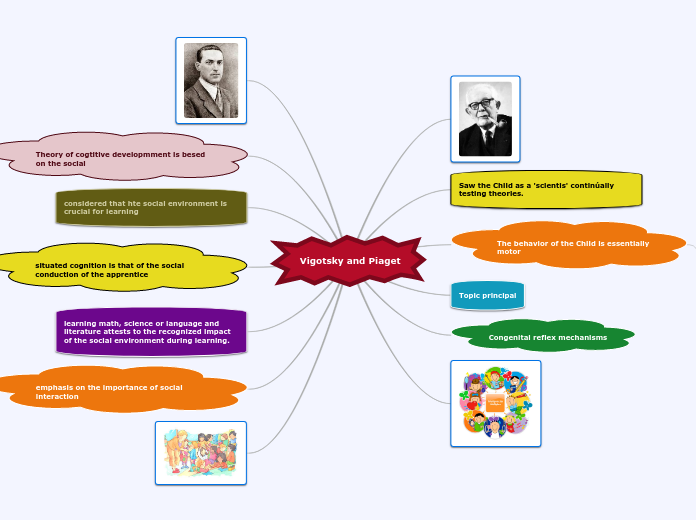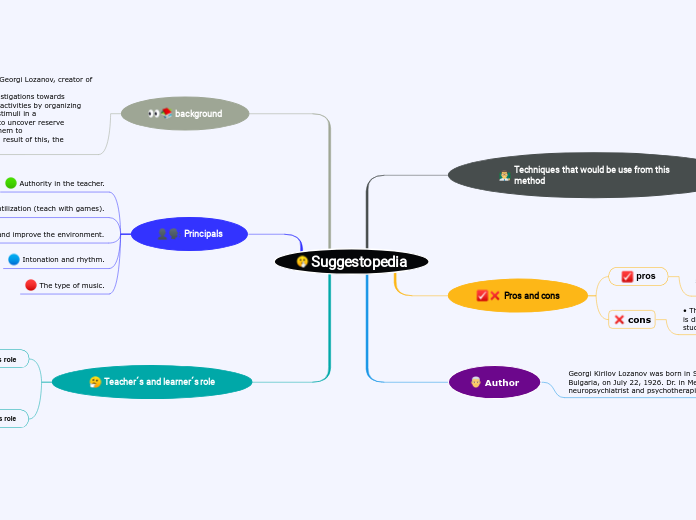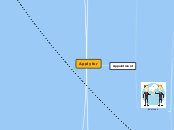SIB3U1
Main topic
Evolution
Evolution and Speciation
Speciation: How Species Form
Speed of Evolutionary Change
Punctuated Equilibrium
Gradualism
Patterns in Evolution
Convergent Evolution
Divergent Evolution
Adaptive Radiation
Hawaiian Islands
Speciation
Consequences of Human Activities
Prevent Gene Flow
Giant Panda
Allopatric
Darwin's Finches
Ecological Niche
Reasons for Allopatric Speciation
Lava Flow
Glacier
Sympatric
Non-random Mating (animals)
Chromosomal Changes (plants)
Speciation Mechanism
Gametic Isolating
Mechanical Isolating
Temporal Isolating
Habitat Isolating
Behavioural Isolating
Pre-zygotic Isolating
Hybrid Breakdown
Hybrid Sterility
Hybrid Inviability
Mechanisms of Evolution and Their Effect on Populations
Genetic Variation
Change of Allele Frequencies In Populations
Sexual Selection
Sexual Dimorphism
Disruptive Selection
Directional Selection
Stabilizing Selection
Genetic Drift
Bottleneck Effect
Famine
Natural Disasters
The Founder Effect
Hawaiian and Galapagos Islands
Non-Random Mating
Inbreeding
Self-Fertillzing Flowers
Preferred Phenotype
Humans
Allele Distribution
Gene Flow (Migration)
Grey Wolves
Mutation
Norway Rat
Developing a Theory of Evolution
Sources of Evidence for Evolution
Evidence from DNA
Evidence from Embryology
Evidence from Anatomy
Analogous Structures
Homologous Structures
Homologous Hair
Biogeography
Fossils
Vestigial Structure
Transitional Fossil
Archaeopteryx
Fossil Record
Scientific Contributions to a Theory of Evolution
History of Evolution
Charles Darwin and Alfred Russel Wallace
Survival of the Fittest
Charles Darwin
Descent with Modification
Theory of Evolution by Natural Selection
Jean-Baptiste Lamarck
Inheritance of Acquired Characteristics
Charles Lyell
Uniformitarianism
Georges Cuvier
Catastrophism
Palaeontology
Introducing Evolution
Natural Selection and Artificial Selection
Artificial Selection
Gene Banks
Genetic Engineering
Consequences
Deformities
English Bulldogs
Monoculture
GMO
Increase Supply
1896 Illinois Experiment Station
Increase Nutrition
Natural Selection
Situational
Fitness
Selective Pressure
Adaptation and Variation
Adaptations and Survival
Mutations
Selective Advantage
Rapid Reproduction
Antibiotic-Resistant Bacteria
Staphylococcus Aureus Bacterium
Daphnia
New Alleles
Variation
Genetics
Heritable Mutations
English Peppered Moth
Mimicry
Viceroy Butterfly
Extinct
Diversity of Living Things
Multicellular Diversity
The Biodiversity Crisis
Crisis
Biodiversity Crisis
Mass Extinction
Climate Change
Aquatic Ecosystems
Decline in Growth Rate
Plants and Animal Pollinators
Dependant
Sex Determination
Habitat
Lack of Diversity
Flooding
Food Sources
Food Chain Supply Shortages
Modelling
The Animal Kingdom
Animal
Gametic Reproduction
Movement
Muscle Tissue
Nerve Tissue
Segmentation
Body Cavity
Coelom
Symmetry and Body Plans
Bilateral Symmetry
Radial Symmetry
Number of Body Layers
Three Layers of Skin
Endoderm
Inner Layer
Mesoderm
Middle Layer
Ectoderm
Outer Layer
Levels of Organization
Tissue
Organ Systems
Organs
Vertebrates
Notchord
Mammals
Placenta
Whales
Bears
Bats
Mammary Glands
Birds
Endothermy
Ectothermy
Reptiles
Amphibians
Tetrapods
Fish
Cartilage
Invertebrates
Arthropods
Exoskeleton
Echinoderms
Molluscs
Mantle
Worms
Sponges and Cindarians
Medusa
Polyp
Reproduce sexually
Ability to move
Heterotrophs
No cell wall
The Fungus Kingdom
Lichens
Composite Organsims
Photosynthetic
Phylum Basidiomycota
Fruiting Bodies
Basidium
Phylum Ascomycota
Ascus
Zygospore Fungi
Zygospores
Phylum Chytridomycota
Aquatic
Saprobial
Mutualistic
Predatory
Parastic
Fragmentation
Budding
Structure
Fruiting Body
Mycelium
Hypha
The Plant Kingdom
Vascular
Seed Producing
Angiosperms
Cotyledon
Monocot
Dicot
Fruit
Contains seeds
Flower
Containing Fruit
Flowering Plants
Trillium
Roses
Gymnosperms
Cones
Cone-bearing trees
Cedars
Spurce
Fern
Now a Zygote
Male and female reproduction organs formed
Haploid spores, Gametophyte
Non-vasular
Bryophytes
Hornworts
Liverworts
Moss
Mitosis, new sporophyte
Antheridium
Archegonium
Grows
From Algae to Terrestrial Plants
Multicellular
Euglenoids
Green Alage
Sporic Reproduction
Gametophyte
Sporophyte
Plant Embryos
Adaptations to Land
Vascular Tissue
Roots
Leaves
Phloem
Xylem
Phylum Chlorophyta
Brown Algae
Phylum Pheaophyta
Red Algae
Phylum Rhodophyta
Diversity: From Simple to Complex
Protists: The Unicellular Eukaryotes
Plant-like
Englenoids
Dinoflagellates
Phylum Pyrrophyta
Red Tide
Diatoms
Phylum Chrysophyta
Carry out Photosynthesis
Fungus-like
Phylum Oomycota
Phylum Acrasiomycota
Phylum Myxomycota
Sporozoans: Phylum Sporozoa
Flagellates: Phylum Zoomastigina
Flagellum
Cilliates: Phylum Ciliphora
Cillium
Cercozoans: Phylum Cercoza
Pseudopods
Characteristics
Unicellular
Algae
Brown
Green
Red
Eukaryotic Evolution and Diversity
Life Cycle
Multicellularity
Chloroplasts and Mitochondria
Host Cell
Endosymbiont
Endosymbiosis
Comparing Bacteria and Archaea
Protecting Genetic Material
Endospores
Loops of DNA
Plasmids
New Genetic Content
Conjugation
Comparing
Binary Fission
Habitats
Mesophiles
Extremophiles
Salt-lover
Salt Lakes
Acid-lover
volcanic Crater Lakes
Heat-lover
Deep Sea Vents
Nutrition
Methanogenesis
Aggregations
Bacili
Cocci
Human Health
Classifying
Gram Stain
A Microscopic Look at Life's Organization
Disease
Prions
Non-viral Disease-causing
Infection, Micro-Organisms
Cold Sores
Viruses
Biotechnology
Reproduction In Viruses
Lysogenic Cycle
Lysis and Release
Attachment
Entry
Provirus Formation
Assembly
Lytic Cycle
Classifying Viruses
Capsid
Prokaryotes and Eukaryotes
Classifying Life's Diversity
Classifying Types of Biodiversity
Diversity
Ecosystem Diversity
Function
Enhance
Resilience
Genetic Diversity
Benefits
Supports Conservation Biology
Provides Resistance to Disease
Population
Gene Pool
Species Diversity
Kingdoms and Domains
Characteristics of Kingdoms
Heterotroph
Autotroph
Dichotomous Key
Identification at the Species Level
Three Domains
Eukarya
Major Cell Types
Eukaryotic
Prokaryotic
Structural Diversity
The Six Kingdoms
Archaea
Bacteria
Protists
Fungi
Plants
Animals
Determining How Species are Related
Importance of Classification
Environment
Society
Technology
Evidence
Physiology Evidence
Order Artiodactyle
Family Bovidae
Physiology
Anatomical Evidence
Anatomy
Relationship Among Organisms
Phylogenetic Tree
DNA Evidence
Physiological
Morphological
Ancestor
Identifying, Naming and Classifying Species
Identifying Species
Phylogeny
Morphology
Species
Classification
Grey Wolf
Hierarchical Classification
Naming Species
Taxonomy
Taxonomic Categories
Taxon (Taxa)
Rank
Binomial Nomenclature
Genetic Processes
Complex Patterns of Inheritance
The Future of Genetic Research
Bioinformatics
Margaret Dayhoff
Human Genome
Genomics
Genetic Profiles
Gene Expressions
Microarrays
Gene Variations to Disease
Inheritance of Linked Genes
Linked Genes
Sex-Linked Inheritance
Sex-Linked Genes
Sex-Linked Trait
Hairy Ears
Hemophilia
Red and White Eyes, Fruit Flies
Chromosome Mapping
Beyond Mendel's Observations of Inheritance
Polygenic Inheritance
Polygenic Trait
Continuous Varations
Multiple Alleles
Blood Types
Codominance
Heterozygous Advantage
Sickle Cell Anemia
Incomplete Dominance
Patterns of Inheritance
Following Patterns of Inheritance in Humans
Genetic Test
Gene Therapy
Genetic Counselling
Autosomal Inheritance
Autosomal Recessive
Cystic Fibrosis
Autosomal Dominant
Huntington Disease
Pedigree
Studying Genetic Crosses
Chromosome Theory of Inheritance
Law of Independent Assortment
Test Cross
Punnett Squares
Dihybrid
Monohybrid
Understanding Inheritance
Combination of Alleles
Heterozygous
Homozygous
Phenotype
Genotype
Law of Segregation
Recessive
Dominant
Pea Plants
True Breeding
Monohybrid Cross
F1 Generation
F2 Generation
P Generation
Trait
Cell Division and Reproduction
Reproductive Strategies and Technologies
Cloning
Somatic Cell Nuclear Transfer
Reproductive Cloning
Therapeutic Cloning
Gene Cloning
Recombinant DNA
Strategies
In Humans
In Vitro Fertilization
Preimplantation Diagnosis
In Agriculture
Embryo Transfer
Artificial Insemination
Selective Breeding
Sexual Reproduction
Prenatal Testing
Non-Invasive
Blood Tests
Ultrasounds
Invasive
Fetus DNA Sample
Gamete Formation in Animals
Oogenesis
Spermatogenesis
Meiosis
Errors
Abnormalities
Non-Disjunction
Trisomy
Chromosomes 13
Patau
Chromosomes 18
Edward
Chromosomes 21
Down
Monosomy
Turner syndrome
Incorrect Reformation
Translocation
Deletion
Duplication
Phases of Meiosis
Meiosis II (Haploid)
Prophase II
Meiosis I (Diploid)
Telophase I
Anaphase I
Metaphase I
Prophase I
Synapsis
Outcomes/ Importance
Crossing Over
Independent Assortment
Genetic Variations
Exchange of Genetic Material
Creation of Gametes, different combinations
Genetic Recombination
Genetic Reduction
Reproduction
Processes
Diploid
Haploid
Subtopic
Fertilization
Zygote
Gamete
Conception
Asexual
Sexual
Cell Division and Genetic Material
Chromosome Pairs
Autosome
Sex Chromosome
Y
X
Replication
Double Helix
Structures
Karyotype
Allele
Genes
Homologous
Genome
Phosphate
Sugar
Thymine
Guanine
Cytosine
Adenine
The Cell Cycle
Stages
Checkpoints
Regulation of Normality
Abnormal = Unhealthy, Defects
Cancer
Normal = Healthy
Cytokinesis
Creation of New Cell Wall
Division of Cytoplasm
Mitosis
Genetic Material and Nucleus Divides
Telophase
Anaphase
Metaphase
Prophase
Centrosomes
Spindle Fibers
Centromere
Sister Chromatids
Condensed into Chromosomes
Interphase
DNA is Chromatin
Prepares
Copies
Matures/ Grows
Duration
12 to 24 hours
Functions
Replace dying/ dead cells
Repair of Tissue
Growth of the Organisms
Somatic Cells









